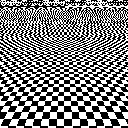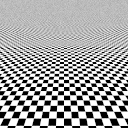Head Injury
Headphoneus Supremus
- Joined
- Sep 11, 2009
- Posts
- 5,404
- Likes
- 443
Quote:
No. Analog signals are sine waves. They don't have straight lines. The D/A process takes the points of a digital wave form and basically draws sine waves between them. It doesn't matter how smooth the digital waveform is. Twenty points in a period won't draw a more accurate sine wave than two points in the period. All you need is an approximation.
Think about it like this. You have two devices that can draw a circle. One is a regular compass, with two contact points (the center and the pencil). The other is a weird extra complex compass with a center and 19 pencils arrayed in a circle around it. One won't draw a better circle than the other.
Once again, a higher sampling rate (which is pretty much what your graph represents) only increases the maximum frequency. It doesn't magically make the other frequencies smoother, just because it gives the D/A process more points to play with.
I think the lines will still be straight, if the D/A doesn't alter them.
No. Analog signals are sine waves. They don't have straight lines. The D/A process takes the points of a digital wave form and basically draws sine waves between them. It doesn't matter how smooth the digital waveform is. Twenty points in a period won't draw a more accurate sine wave than two points in the period. All you need is an approximation.
Think about it like this. You have two devices that can draw a circle. One is a regular compass, with two contact points (the center and the pencil). The other is a weird extra complex compass with a center and 19 pencils arrayed in a circle around it. One won't draw a better circle than the other.
Once again, a higher sampling rate (which is pretty much what your graph represents) only increases the maximum frequency. It doesn't magically make the other frequencies smoother, just because it gives the D/A process more points to play with.

























